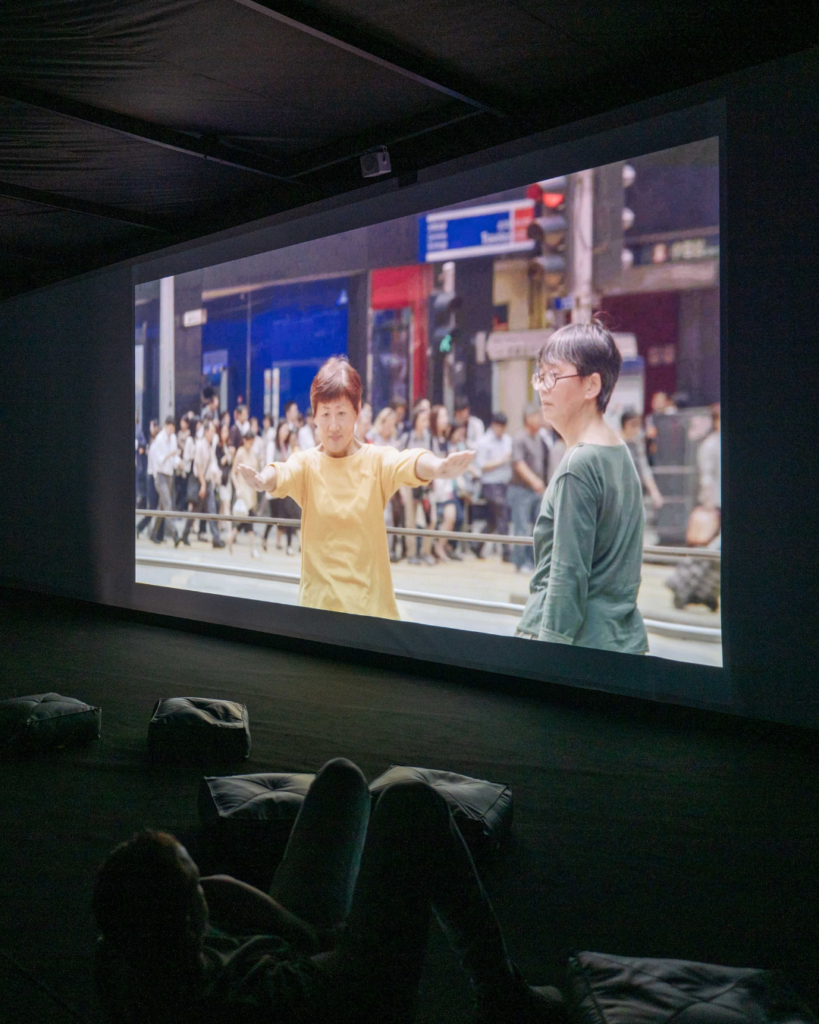Legend
Introduced to coincide with the Fair’s tenth edition in March 2025, Legend featured the work of six internationally renowned pioneering artists who have made significant contributions to the development of the arts in Asia-Pacific and whose work continues to inspire new generations of artist. Curated by Enoch Cheng, this special feature included both gallery booth presentations and a video screening in the Fair’s on-site theatre.
Dean-E Mei
(b. Taipei, 1954)
Astar Gallery, Taipei
Dean-E Mei is a leading avant-garde artist from Taiwan known for his contribution to the development of contemporary art. Since the 1970s, Mei’s oeuvre has traversed a variety of mediums, including photography, installation art, and painting. Hailed as “the father of Dadaism in Taiwan,” Mei is renowned for his innovative practice of collecting and recontextualising quotidian objects into compelling installations that articulate complex emotional narratives in response to the nuanced socio-political and historical milieu of contemporary life. His exhibitions have received accolades on both national and international stages, in prestigious galleries and museums across Asia, the United States, and Europe. A seminal solo exhibition, “WANTED DEAN-E MEI”, was held at the Taipei Fine Arts Museum in 2014.
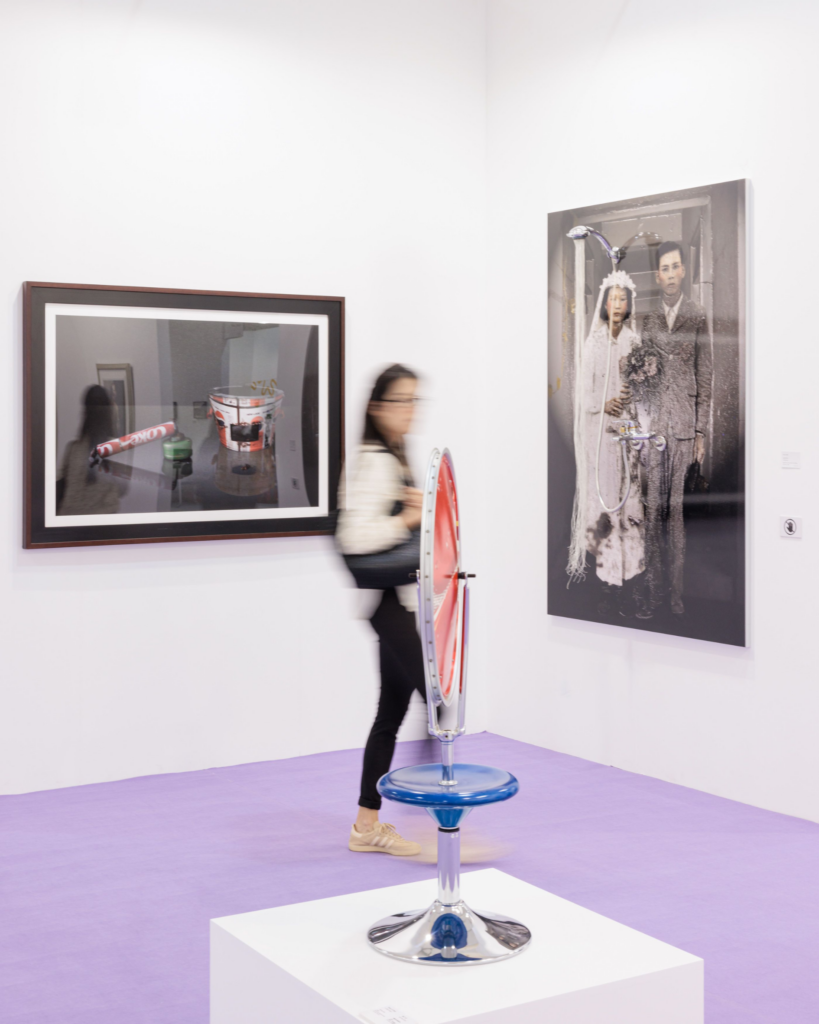
Lee Inseob
(b. Busan, 1952)
Suppoment Gallery, Seoul
Distinguished Korean artist Lee Inseob is celebrated for his vibrant use of colour and expressive brushwork, blending these elements with Eastern philosophical concepts to create a unique fusion of artistic traditions. His studio, nestled among the verdant forests and valleys of Gangwon-do, is a continual source of inspiration gleaned from nature, which he has embraced as a muse for over four decades. Lee’s artistic technique prominently features contour lines that elegantly delineate colour planes, creating a dynamic interplay between form and hue. His depictions of lush trees and majestic mountains, rendered through a robust application of colour and ash with a coarse brush, contribute to a vibrant visual lexicon that eloquently reflects the richness of the natural environment. The artist’s impressive portfolio includes participation in 35 solo exhibitions and over 500 group exhibitions.
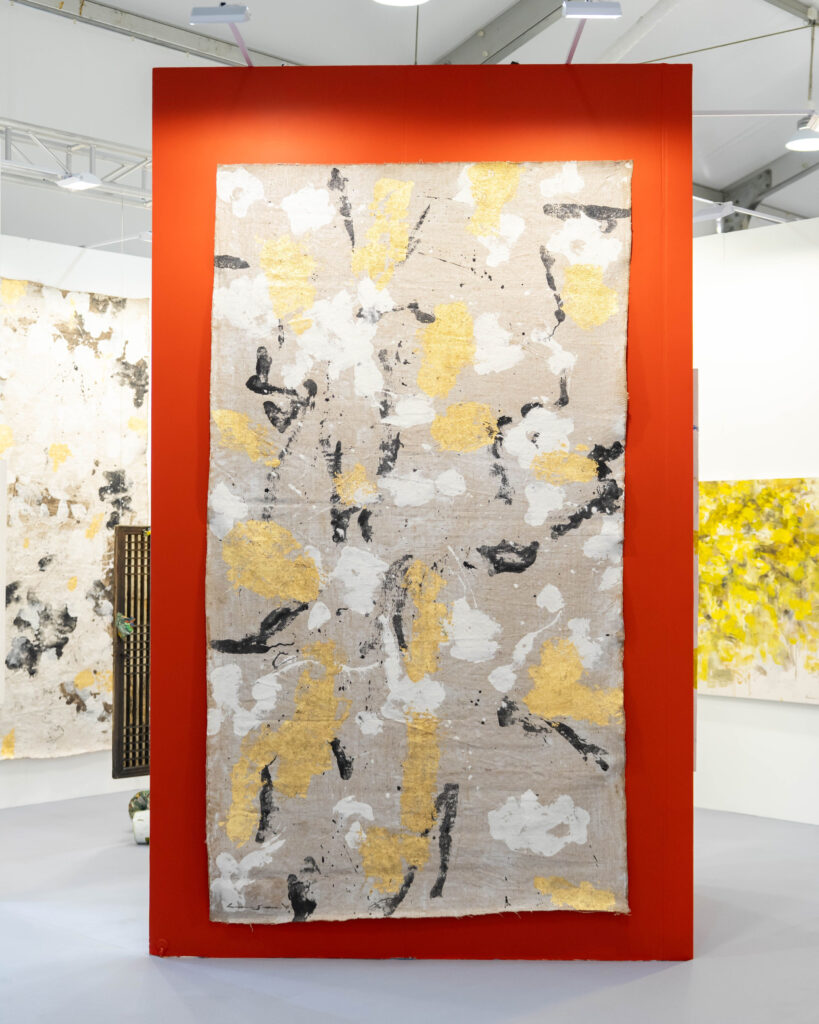
Emily Kame Kngwarreye
(b. c.1910, Northern Territory; d. 1996, Alice Springs)
Rebecca Hossack Art Gallery, London
Emily Kame Kngwarreye, a venerated Aboriginal Australian artist, has significantly altered the trajectory of global art since the late twentieth century. An elder of the Anmatyerre people, Kngwarreye’s oeuvre is imbued with the nuances of her extraordinary life and the complex colonial history of Alhalkere country. Remarkably, she embarked on her artistic journey in her late 70s and, during the last eight years of her life, produced over 3,000 canvases—an average of nearly one per day. Distinguished from her contemporaries, Kngwarreye pioneered a fluid dot technique coupled with a vibrant colour palette in the early 1990s. This innovation resulted in compositions that pulsate with energy and embrace an abstract aesthetic.
Posthumously, Kngwarreye represented Australia at the 1997 Venice Biennale. Her works have been displayed in esteemed institutions, including the National Gallery of Australia, and her work will be the subject of the forthcoming solo exhibition at Tate Modern, opening in July 2025.
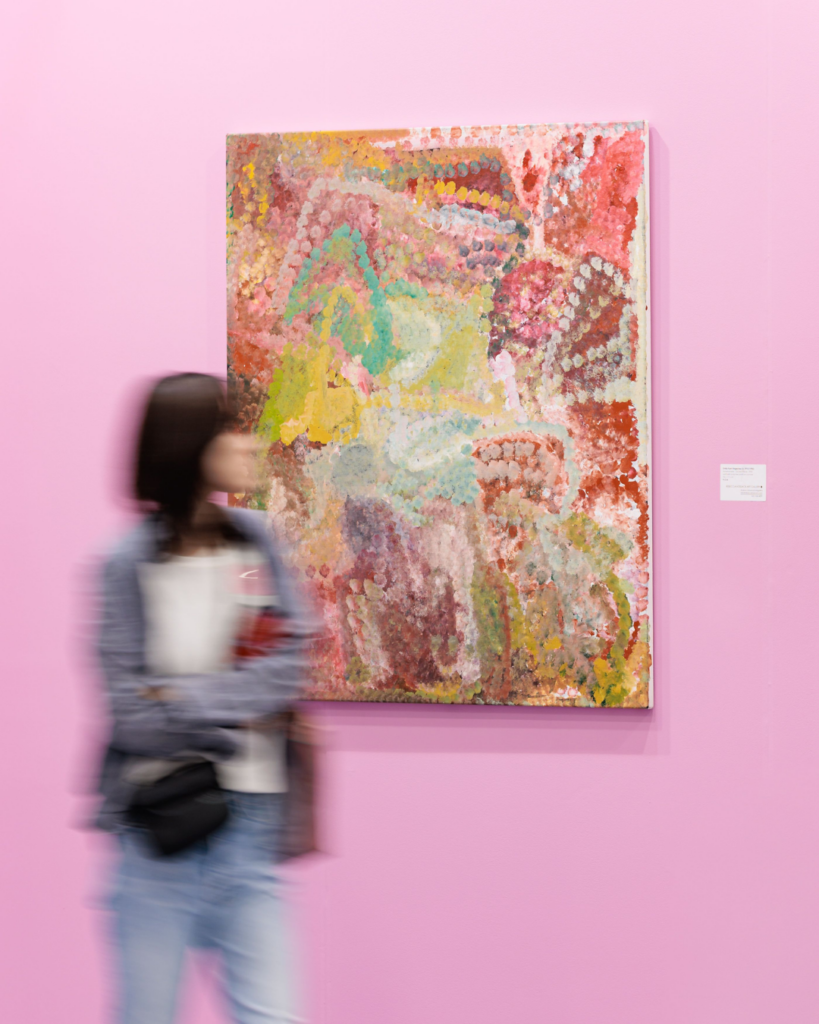
Ay-O
(b. 1931, Ibaraki Prefecture)
Whitestone Gallery, Hong Kong, Tokyo, Karuizawa, Taipei, Beijing, Seoul, Singapore
Ay-O is a distinguished Japanese artist emblematic of the post-war era. As a pivotal figure within the international Fluxus art movement, he posits that art is profoundly intertwined with the fabric of everyday life. His representation of Japan at the Venice Biennale in 1966 marked a significant milestone in his career, setting the stage for his subsequent acclaim as the “Rainbow Artist.” Ay-O’s innovative oeuvre transcends traditional paradigms of painting by incorporating the full spectrum of rainbow hues in place of conventional patterns. This avant-garde methodology invites viewers to engage in a richer tapestry of sensory experiences, stimulating their perceptions through vibrant visual stimuli.
Ay-O’s works are part of collections from prestigious museums worldwide, including MoMA and The Museum of Contemporary Art Tokyo. His art was featured in the solo exhibition Ay-O: Hong Hong Hong (2024) at M+, underscoring his pivotal role in shaping Asian visual culture.
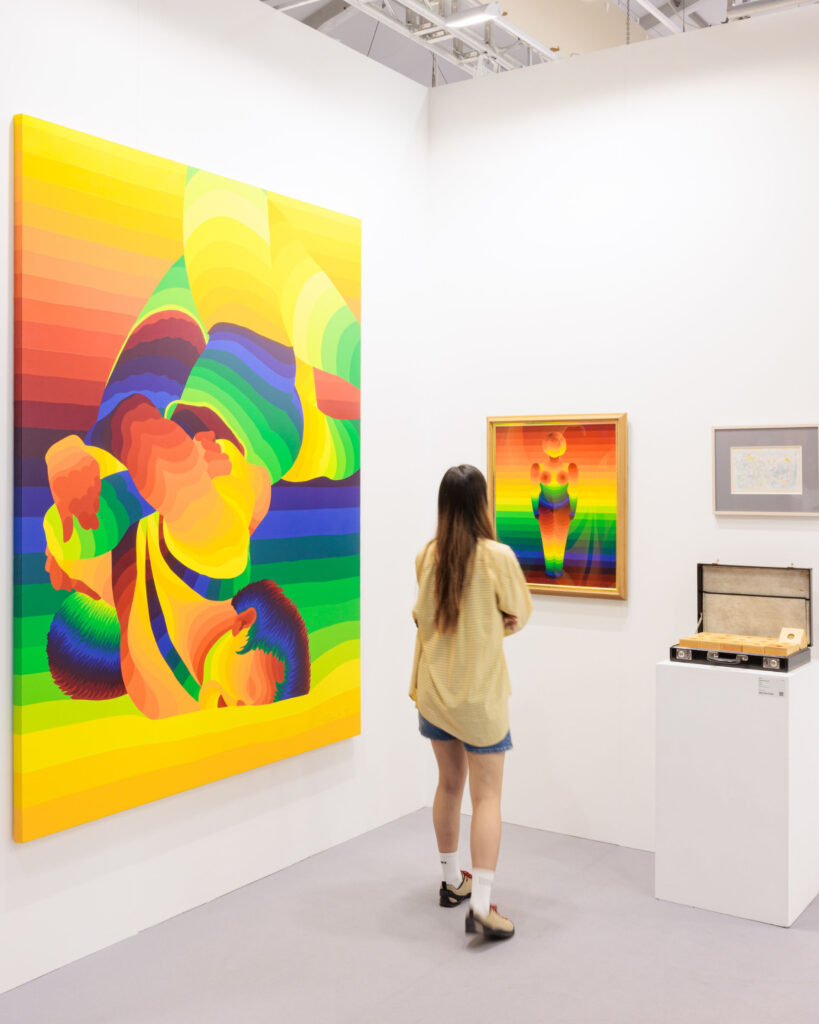
Eikoh Hosoe
(b. 1933, Yonezawa; d. 2024, Tokyo)
see+ Gallery, Beijing, Shenzhen
Eikoh Hosoe was a prominent figure in post-war Japanese photography, transforming the medium by breaking free from traditional documentary limitations and elevating it to a powerful form of artistic expression. His signature black-and-white photographs explore themes of death, eroticism, and human psychology, turning simple images into profound philosophical statements. As both an artist and cultural influencer, Hosoe’s impact extended well beyond his haunting compositions; he played a crucial role in shaping Japanese photography by curating exhibitions that introduced seminal Western photographers to Japanese audiences in 1968 and by mentoring emerging talents like Daido Moriyama.
Collaborating with cultural icons such as writer Yukio Mishima and avant-garde performer Tatsumi Hijikata, Hosoe positioned photography at the intersection of literature, performance art, and film. Throughout his career, his work maintained a remarkable tension between tradition and modernity, creating psychologically charged images that often drew on religious and mythological themes while pushing the boundaries of photographic abstraction. Hosoe’s artistic vision not only documented but actively shaped Japan’s post-war cultural landscape, establishing him as a significant figure in the global history of photography.
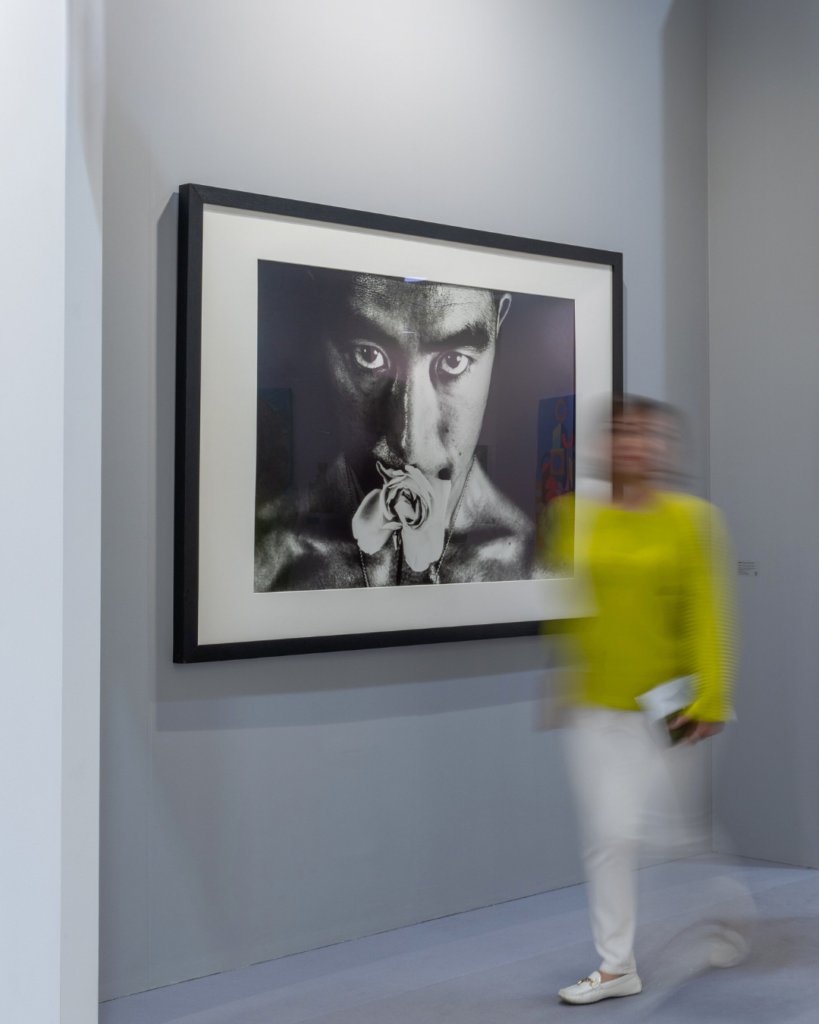
May Fung
(b. 1952, Hong Kong)
Karin Weber Gallery, Hong Kong
May Fung is a pioneering video artist from Hong Kong, having begun her career with experimental films in the 1970s and video art in the 1980s. Fung has been a significant influence on the cultural development of the city, co-founding the underground cinema club: Phoenix Cine Club, and Videotage, one of the first leading institutions to specialize in new-media art in Asia. Fung also manages ACO, an independent bookstore and art hub.
Fung’s work frequently explores themes of identity, focusing on issues such as women’s experiences in patriarchal societies, the tension individuals face between tradition and modernity, and the impact of socio-political changes. Utilising the unique qualities of moving images, she poetically navigates ambiguity in a world where clear definitions can often be elusive. Her artworks are part of the permanent collection of M+.
